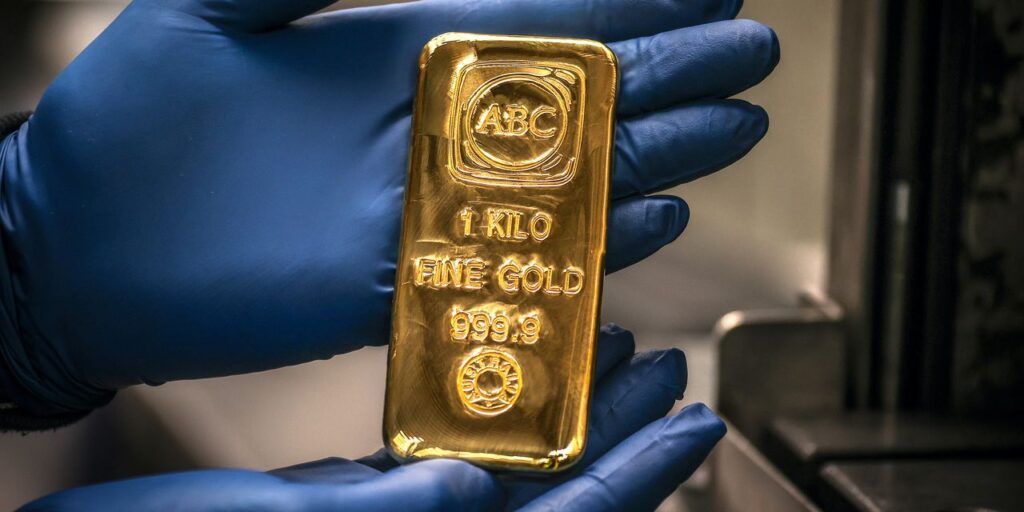Gold futures headed higher on Tuesday, with prices looking to settle at their highest in a week as the U.S. dollar and Treasury yields declined in the wake of data showing that the cost of living was unchanged in October.
Gold for December delivery
GCZ23,
climbed by $20.90, or 1.1%, to $1,971.10 an ounce on Comex. A settlement around this level would be the highest for a most-active contract since Nov. 7, FactSet data show.
The U.S. consumer price index reading has “crushed what was left of any rate-rise betting in both Treasury bonds and the Fed Funds futures market,” Adrian Ash, director of research at BullionVault, told MarketWatch. “That’s crushed the dollar on the [foreign exchange] market and sent gold sharply higher” in terms of the greenback.
“The U.S. consumer price index reading has “crushed what was left of any rate-rise betting in both Treasury bonds and the Fed Funds futures market.” ”
— Adrian Ash, BullionVault
U.S. inflation was flat in October as the cost of gasoline dropped 5.3% last month. Economists polled by the the Wall Street Journal had forecast a 0.1% advance in the consumer-price index.
See: U.S. inflation flat in October thanks to cheaper gas, CPI shows. prices not rising as fast.
Against that backdrop, the dollar and Treasury yields declined. The ICE U.S. Dollar Index
DXY
was down 1.1% at 104.48, while the yield on the 10-year Treasury
BX:TMUBMUSD10Y
fell to 4.456% from 4.631% on Monday.
Weakness in the dollar tends to decrease the opportunity costs for investors considering dollar-priced gold as an option versus other perceived havens. Meanwhile, lower yields should raise the prospects for gold against government bonds.
The next step for the U.S. Federal Reserve, “sooner or later, now looks certain to be [interest] rate cuts,” said Ash. That’s “likely to cap and then help cut rates” at the Bank of England and European Central Bank too.
That would boost “what’s proving a very resilient uptrend in gold, as the opportunity cost for long-term investors falls along with the financing cost for speculative traders,” he said.
Read the full article here

